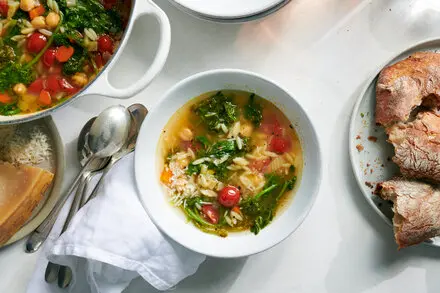Introduction to Cooking with Fresh Herbs
Fresh herbs are a powerful tool in the kitchen, adding vibrant flavors and aromas to dishes. Cooking with them brings out their best qualities, making meals more aromatic, colorful, and delicious. Moreover, fresh herbs offer a natural way to enhance flavor without the need for excess salt or heavy seasoning. In this article, we’ll explore how to use fresh herbs effectively in cooking, from choosing the right herb to understanding when to add them to your dishes.
Choosing the Right Fresh Herb
When cooking with fresh herbs, it’s essential to choose the right one for your dish. Different herbs have unique flavors and uses, so selecting the appropriate herb can elevate your cooking.
Common herbs include basil, parsley, cilantro, thyme, rosemary, mint, oregano, and dill. For example, basil pairs wonderfully with Italian dishes like pasta and salads, while rosemary is perfect for roasted meats. Fresh cilantro adds a burst of flavor to Mexican or Indian dishes. Understanding the flavor profile of each herb will help you pair them correctly with your meals.

Preparing Fresh Herbs
Before cooking with fresh herbs, proper preparation is key. Rinse herbs thoroughly under cold water to remove any dirt or pesticides. After rinsing, gently pat them dry with a towel or let them air dry.
For leafy herbs like basil, cilantro, and parsley, remove the leaves from the stems. For woody herbs like rosemary and thyme, you can either strip the leaves off the stem or use the entire sprig. To avoid overpowering a dish, it’s best to chop herbs finely, but you can also leave them whole for added texture and presentation.
When to Add Fresh Herbs
Timing is everything when it comes to fresh herbs. Some herbs are better added at the beginning of cooking, while others should be added at the end for maximum flavor.
For hearty herbs like rosemary, thyme, and oregano, it’s best to add them early in the cooking process, allowing their flavors to infuse into the dish. These herbs work well in slow-cooked stews, soups, and braises.
On the other hand, delicate herbs like basil, parsley, and cilantro should be added at the end of cooking or as a garnish. Adding them too early can cause them to lose their vibrant flavor and aroma. For example, sprinkle fresh parsley on a pasta dish right before serving to retain its flavor.
Using Fresh Herbs in Different Dishes
Fresh herbs can be incorporated into a variety of dishes to enhance flavor.
In Soups and Stews
For soups and stews, hearty herbs like bay leaves, thyme, and rosemary can be added early to infuse the liquid with their flavor. Simply tie them in a bundle or add them loose, then remove them before serving. Delicate herbs, like parsley, can be stirred in at the end for a fresh, bright note.
In Salads and Dressings
Fresh herbs are perfect for salads and dressings. Add parsley, cilantro, mint, or basil directly to the salad for a burst of flavor. To make a simple herb dressing, whisk together olive oil, vinegar, mustard, and fresh herbs like basil or tarragon.
In Meat and Fish Dishes
Fresh herbs like rosemary, thyme, and sage complement meats such as lamb, chicken, and pork. You can use whole sprigs to infuse flavor during roasting or grilling, or chop them finely for marinades. For fish dishes, delicate herbs like dill and tarragon work wonderfully when paired with salmon or white fish.
In Sauces and Pestos
Fresh herbs are a key ingredient in many sauces and pestos. Basil is often used in pesto, while parsley or cilantro can be blended into green sauces. Additionally, fresh herbs like rosemary and thyme add depth to tomato-based sauces.
Storing Fresh Herbs
To keep fresh herbs from wilting, proper storage is essential. For herbs with thick stems, like rosemary and thyme, you can store them in a glass of water, similar to a bouquet. Cover them loosely with a plastic bag and place them in the fridge. For leafy herbs like basil, cilantro, and parsley, wrap them in a damp paper towel and place them in a resealable bag in the fridge.
Alternatively, you can freeze herbs for longer storage. Simply chop them and place them in an ice cube tray with a little olive oil or water. This method allows you to have fresh herbs available even when they’re out of season.
Herb Combos to Try
Experimenting with herb combinations can create exciting flavor profiles. Here are some herb combos that work well together:
- Italian Herbs: Basil, oregano, rosemary, and thyme work well in Italian dishes such as pasta, pizza, and risotto.
- Mediterranean Blend: Mint, dill, parsley, and oregano are common in Mediterranean cuisine, adding fresh flavor to salads, grilled meats, and dips.
- Citrusy Herbs: Combine lemon zest with fresh herbs like basil, cilantro, or parsley for a refreshing, citrusy punch in salads or seafood dishes.
- Hearty Herb Mix: Rosemary, thyme, sage, and bay leaves are perfect for roasted meats, stews, and braises.
Conclusion
Cooking with fresh herbs is an easy and effective way to enhance the flavor and aroma of your meals. By selecting the right herbs, preparing them correctly, and understanding when to add them to your dishes, you can take your cooking to the next level. Experimenting with different herbs and combinations will help you develop your culinary style and discover new flavors. Therefore, fresh herbs are an essential tool in every cook’s kitchen, offering endless possibilities for delicious, aromatic dishes.




